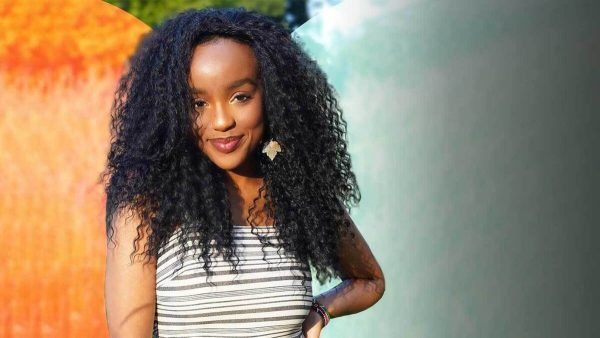Defending Gay Rights: Discourses Of Opposition To Marriage Equality
Along with millions of others, an thropologists have followed re cent developments in the struggles for sexual equality that are being waged in the U.S. Many of us have been deeply dismayed by the inflammatory and divisive rhetoric of political and religious elites who oppose granting marital rights to same-sex couples. In some ways most discomfiting is the shameless manner in which various political and religious leaders have willfully ignored and distorted widely available scientific evidence in their efforts to galvanize opposition to initiatives that would enable gay and lesbian couples to enjoy the same legal rights and legitimacy automatically vested in their heterosexual counterparts. The claim made by President George W. Bush, for example, that marriage between a man and a woman has for millennia been “the fundamental institution of civilization” and cannot be severed from its “cultural, religious, and natural roots without weakening society” is completely false. Countless African, Asian, and other societies throughout history have accorded legitimacy and sanctity alike to polygynous marriages entailing a man simultaneously joined in wedlock to two or more women, as of course do Mormon and Islamic scriptures. Also well-described in the historical and ethnographic literature are the polyandrous unions of Tibet and Nepal, which involve a woman simultaneously married to two or more men. Less common but nonetheless worth noting are the combinations of polygynous and polyandrous arrangements, sometimes referred to as polygynandrous, such as used to obtain among the Nayar of southern India, whereby each partner to a marriage had (socially approved) sexual and martial relations with several other individuals of the “opposite sex”. We also know of many societies in the world (e.g., the Nuer and Southern Bantu peoples in Africa; Bugis, Ngaju Dayak, and Iban in Southeast Asia) in which same-sex marriages enjoy sanctified legitimacy and occur alongside heterosexual unions that they neither threaten nor undermine. In short, heterosexual monogamy, though statistically common (at least as an ideal) both historically and cross-culturally, is by no means the only form of marriage that human societies have seen as viable, legitimate, or sacred. Contentions that marriage everywhere involves one man and one woman are inconsistent with over 100 years of research on kinship and marriage, as virtually any introductory textbook on anthropology or “the family” (an essentializing expression if ever there was one) makes clear. These are no small matters, for one of the chief arguments made by opponents of marriage equality is that any deviation from heterosexual monogamy, as it is idealized to exist today in the U.S., cannot be tolerated. These same opponents assert that that such variance noted by anthropologists does not appear in recent history or the cross-cultural record since it is “obviously” (a word frequently used in this context) both “unnatural” (because it is non-reproductive or allegedly absent from “the realm of nature”), and a clear and abhorrent violation of “God’s will” (another heavily coded reference).
Encourage Critical Rethinking In the academy and beyond, anthropologists are uniquely qualified and bear a clear responsibility to encourage critical rethinking of arguments that invoke claims about sexuality – both human and non-human – and the imperatives and constraints of human society and species survival. There are at least three reasons for this. First, we are heirs to an intellectual tradition that has always taken humankind in its entirety, past and present, as our object of study. Second, the discipline is committed to understanding humans in relation to other animal species, and we are thus in a strong position (along with zoologists and primatologists) to assess claims about what is “natural” in the sense of being either widespread or routinely present in the “world of nature.” And third, the salience in the discipline in recent decades of feminist scholarship and perspectives on discourses of knowledge and power that build on the work of Michel Foucault (e.g. Discipline and Punish, 1977; The History of Sexuality, Vol. 1, 1978,) have enhanced our awareness of the ways discourses are constructed and invoked to consolidate power and prestige and to marginalize groups of people who are seen by the privileged as unworthy to claim, let alone share in, their perks.
Discourses of Opposition Of considerable interest to me as an anthropologist are the discourses of opposition to marriage equality, particularly the symbols, idioms, and narrative strategies deployed by those who articulate them. With a few notable exceptions (such as the 2004 State of the Union address and his February 2004 endorsement of a constitutional amendment to define marriage), Bush has remained silent on most of the issues involved, though his repeated references to the “sanctity of [heterosexual monogamous] marriage” make clear that religious sensibilities underlie his opposition to more inclusive definitions of marriage and equality alike. More revealing than Bush’s sparse but pointed pronouncements on the subject are the discourses of like-minded political and religious elites who are freer to speak their minds. Such discourses usually incorporate one or more of three rhetorical devices: 1) same-sex relationships pose a threat to the (naturalized) family, if only or especially because they are “against nature”; 2) they are a clear and abhorrent violation of “God’s will”; and 3) that even begrudging tolerance of them will lead us down a “slippery slope” to group marriage, incest, and worse. Consider, for instance, the pronouncements of Pastor John MacArthur, a nationally syndicated Christian broadcaster who presides over Grace Community Church in Los Angeles, and the discursive tactics of Representative Marilyn Musgrave, who introduced the resolution for a Federal Marriage Amendment to the US Constitution. On February 24, 2004, MacArthur and Musgrave appeared on Larry King Live, along with Chad Allen, an openly gay actor, and San Francisco Mayor Gavin Newsom, who famously forced the constitutional issues to the forefront of American consciousness by instructing officials at San Francisco City Hall to issue marriage licenses to same-sex couples, which they began doing on February 12. The quotes below are taken from a transcript of the show:
Pastor MacArthur: “It [same-sex marriage] would destroy the family … obviously God designed the family to be a man and a woman to produce a child. It is the DNA, it’s the genetic structure of civilization. If you don’t have that, you don’t have civilization. So you’re striking at the very core of existence … It is in the fabric of human thinking to understand a man and a woman make a marriage and a family. God has put that in the very thinking … The state upholds that standard, always has in every state in every human history … It’s natural to be heterosexual … That’s the way God made us. That’s the normal … The DNA, the genetic structure of humanity, of civilization, of society, is family. Everybody knows that. That’s in the heart. That’s how it works. [To Allen] You’re coming along with others who are homosexual … and overturning what is natural to everyone … It’s a sinful relationship. It’s a relationship that, obviously, common sense tells you, can’t produce children … Built into the fabric of human society is of course the male/female … and the producing of a child. That … is the DNA, the genetic structure of civilization.”
Representative Musgrave: [To Newsom] “How far is this going to go, Mr. Mayor? I’d just like to know how far you’re going to go in defining the law … If you blur the lines of the definition of marriage, Mr. Mayor, how far do you go? … Do you support polygamy? How about group marriage? … What about incest?”
We should critically analyze the symbols, idioms, and curious m?elange of theism, pseudo-science, and supposed common sense in MacArthur’s remarks; note, inter alia, the nonsensical reference to the “genetic structure of civilization” and the blithe remarks about “DNA” and what is “natural” and “normal”. Also worth critical examination is the “slippery slope” rhetoric of Musgrave, variations of which were propounded not all that long ago by those opposed to the decisions of “activist judges” who struck down as unconstitutional US laws that prescribed or condoned racial segregation along with statutes that criminalized inter-racial marriage.
Natural Diversity Here, however, let me stress again that the “it’s against nature” argument is altogether out of keeping with the findings of biologists, zoologists, primatologists, and other scientific researchers who actually study “nature,” which has been commonly defined since John Stuart Mill as the myriad domains that exist “without [or beyond] the voluntary and intentional agency” of humans, and which certainly includes the behavior of animals in the wild. The bad news for those who advance these kinds of arguments is that the scientific record of the behaviors of invertebrates, insects, fish, reptiles, amphibians, birds, and mammals (including chimpanzees and bonobos, our closest primate “cousins”) abounds with evidence demonstrating beyond any doubt that in terms of courtship, physical affection, actual sexual contact (including but not limited to heterosexual mating), bonding and parenting, the natural world is wondrously diverse, exhibiting multiple varieties, combinations, and sequences of homosexual, bisexual, and heterosexual practices (see, for starters, Bruce Bagemihl’s richly documented Biological Exuberance: Animal Homosexuality and Natural Diversity, 1999, and Frans De Wall and Frans Lanting’s Bonobo: The Forgotten Ape, 1997). Coming to terms with such diversity should not be confused with succumbing to naturalistic fallacies suggesting we model human society on the behavioral repertoire characteristic of one or more animal species. My position is simply that arguments against marriage equality or anything else that invoke “nature” or “what is normal” (among animals or otherwise) can and should be evaluated on the basis of scientific evidence as opposed to religious scriptures or “common sense.” More generally, constitutional provisions prohibiting discrimination should serve as the bottom line in assessing initiatives geared toward rethinking US legal norms bearing on marriage, justice, and equality.



